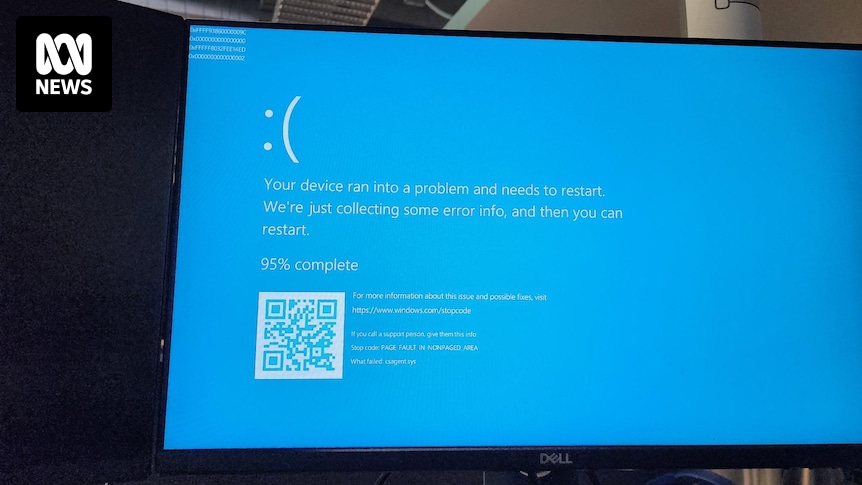- cross-posted to:
- technology
- [email protected]
- cross-posted to:
- technology
- [email protected]
All our servers and company laptops went down at pretty much the same time. Laptops have been bootlooping to blue screen of death. It’s all very exciting, personally, as someone not responsible for fixing it.
Apparently caused by a bad CrowdStrike update.
Edit: now being told we (who almost all generally work from home) need to come into the office Monday as they can only apply the fix in-person. We’ll see if that changes over the weekend…



I always wondered who even used windows server given how marginal its marketshare is. Now i know from the news.
Marginal? You must be joking. A vast amount of servers run on Windows Server. Where I work alone we have several hundred and many companies have a similar setup. Statista put the Windows Server OS market share over 70% in 2019. While I find it hard to believe it would be that high, it does clearly indicate it’s most certainly not a marginal percentage.
I’m not getting an account on Statista, and I agree that its marketshare isn’t “marginal” in practice, but something is up with those figures, since overwhelmingly internet hosted services are on top of Linux. Internal servers may be a bit different, but “servers” I’d expect to count internet servers…
Most servers aren’t Internet-facing.
There are a ton of Internet facing servers, vast majority of cloud instances, and every cloud provider except Microsoft (and their in house “windows” for azure hosting is somehow different, though they aren’t public about it).
In terms of on premise servers, I’d even say the HPC groups may outnumber internal windows servers. While relatively fewer instances, they all represent racks and racks of servers, and that market is 100% Linux.
I know a couple of retailers and at least two game studios are keeping at scale windows a thing, but Linux mostly dominates my experience of large scale deployment in on premise scale out.
It just seems like Linux is just so likely for scenarios that also have lots of horizontal scaling, it is hard to imagine that despite that windows still being a majority share of the market when all is said and done, when it’s usually deployed in smaller quantities in any given place.
It’s stated in the synopsis, below where it says you need to pay for the article. Anyway, it might be true as the hosting servers themselves often host up to hundreds of Windows machines. But it really depends on what is measured and the method used, which we don’t know because who the hell has a statista account anyway.
This is a common misconception. Most internet hosted services are behind a Linux box, but that doesn’t mean those services actually run on Linux.
Well, I’ve seen some, but they usually don’t have automatic updates and generally do not have access to the Internet.
This is a crowdstrike issue specifically related to the falcon sensor. Happens to affect only windows hosts.
It’s only marginal for running custom code. Every large organization has at least a few of them running important out-of-the-box services.
Not too long ago, a lot of Customer Relationship Management (CRM) software ran on MS SQL Server. Businesses made significant investments in software and training, and some of them don’t have the technical, financial, or logistical resources to adapt - momentum keeps them using Windows Server.
For example, small businesses that are physically located in rural areas can’t use cloud based services because rural internet is too slow and unreliable. Its not quite the case that there’s no amount of money you can pay for a good internet connection in rural America, but last time I looked into it, Verizon wanted to charge me $20,000 per mile to run a fiber optic cable from the nearest town to my client’s farm.
Almost everyone, because the Windows server market share isn’t marginal at all.
My current company does and I hate it so much. Who even got that idea in the first place? Linux always dominated server-side stuff, no?
Yes, but the developers learned on Windows, so they wrote software for Windows.
You should read the saga of when MS bought Hotmail. The work they had to do to be able to run it on Windows was incredible. It actually helped MS improve their server OS, and it still wasn’t as performance when they switched over.
No, Linux doesn’t now nor has it ever dominated the server space.
In university computer science, in the states, MS server was the main server OS that they taught my class during our education.
Microsoft loses money to let the universities and students use and learn MS server for free, or at least they did at the time. This had the effect of making a lot of fresh grad developers more comfortable with using MS server, and I’m sure it led to MS server being used in cases where there were better options.